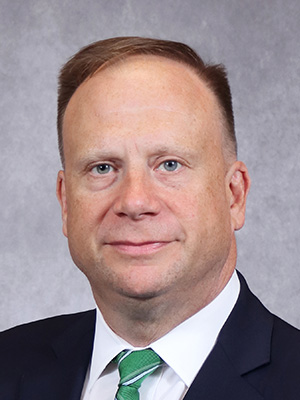 Eschewing the old notion of student success and adopting a twenty-first century vision for Student Success shifts the focus from the student to the institution.
Eschewing the old notion of student success and adopting a twenty-first century vision for Student Success shifts the focus from the student to the institution.
I think the most significant element of the Student Success Theme in MSU’s Strategic Plan is its fundamental reframing of the concept of student success. Elsewhere I have described this as a shift from a twentieth-century notion of an individual student’s success to a twenty-first century conception of Student Success that describes an institution’s ability to meet its students’ needs. As the Strategic Plan states, we believe that “Student success is the measure of an institution’s ability to provide an inclusive, equitable curriculum and environment with the academic, social, wellness and financial support that enables all students to learn, thrive, persist, graduate and succeed after graduation.”
I stress the importance of the shift from a student’s success to Student Success because it draws attention to the ways in which the old notion of student success was predicated on a student’s assumed willingness and ability to succeed in college. It presumed that a student’s success was the result of them being smart enough, prepared enough, and self-disciplined enough to successfully complete their classes. For a time, other so-called non-cognitive variables – like grit – played a significant role in explanations about why one student might persist and graduate while another might not.
Eschewing the old notion of student success and adopting a twenty-first century vision for Student Success shifts the focus from the student to the institution. Instead of asking, “Is this student prepared enough to come to MSU?” it asks, “Is MSU prepared to serve this student’s needs so that they can learn, thrive, and graduate?” This approach still places a great deal of responsibility on a student to be successful, but only after we address questions about the institution’s role in Student Success. Therefore, our Student Success agenda begins with the question, “How do we meet the needs of all of the students we admit so that they are empowered to learn, thrive, and graduate?”
As I celebrate the reframing of Student Success, I also worry about the ease with which we slip back into old, familiar ways of thinking. Lately, I have heard (and, I admit, myself discussed) the fact that this year’s students seem to be engaging in less “help-seeking behavior” than students had in the recent past. We are seeing less use by students of help rooms and learning centers, for example. We are also seeing the emergence in some key classes of a bimodal grade distribution. That is, instead of a bell-shaped curve in the grades in some classes, we see that there’s a set of students at the upper end who are earning higher grades and another set of students who are withdrawing from the class or failing it. Some students – more than in the recent past – are simply disengaged with at least some of their classes.
Explaining some of our students’ less-than-desirable outcomes as the result of them no longer exhibiting help-seeking behavior smacks of a return to old notions of student success. Why have some students’ behaviors changed, and how do we need to change to reflect the impacts of the pandemic on our students?
I have been impressed with the outcomes some educators have had when they have made conscientious changes to reflect changes among our students. Some faculty are using undergraduate learning assistants and data provided by online learning systems to engage students who start but don’t complete assignments. Others are using more small group and engaged learning opportunities to center students as leaders in their own learning. Some have seized asynchronous and online tools to allow them to engage with students in ways and at times that are most desirable for our students.
Outside of the classroom, the university is pivoting to address students’ new needs. Pathway program advisors are seeing larger than ever numbers of hours of advising with students. We have strategically deployed the federal COVID-19 relief funds to support students’ essential needs. In early January, we began explicit retention outreach to students who had not fully enrolled in courses. Intrusive outreach with a holistic view of student success and students’ needs continues to drive the work of our advising community. Thank you all for this good work!
Our students will continue to change, and we must change with them to ensure their success and MSU's role in helping them learn, thrive, and graduate.
Feedback and suggestions, especially from the MSU community, welcome at largent@msu.edu.